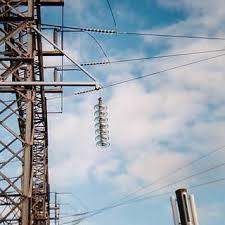High Voltage Electric Insulators Market Overview Highlights Global Infrastructure Transformation

The high voltage electric insulators market is central to the development and operation of modern electrical transmission systems. These insulators play a vital role in preventing current leakage, supporting electrical conductors, and ensuring the safe functioning of overhead and underground high-voltage lines. As the global energy landscape continues to modernize—with nations investing in grid upgrades, HVDC technology, and renewable integration—the demand for high-performance insulators is on the rise. This article explores the overall landscape of this growing and indispensable market.
Market Definition and Importance
High voltage electric insulators are critical components used in power transmission and distribution systems to isolate electrical conductors from physical support structures such as towers and poles. They ensure that electricity flows efficiently across long distances without grounding or arcing. These insulators are essential in maintaining system integrity in both alternating current (AC) and direct current (DC) applications, particularly when voltages exceed 1,000 volts.
Their performance is influenced by factors such as voltage level, environmental conditions, pollution levels, mechanical stress, and installation design. As energy infrastructure becomes more complex and widespread, these variables play a significant role in shaping product innovation and market demand.
Key Components and Product Segmentation
The high voltage insulators market comprises several product types, each tailored to specific voltage levels, configurations, and use environments:
-
Suspension Insulators: Most commonly used in high-voltage transmission, offering mechanical flexibility and adaptability to varying tower structures.
-
Pin and Post Insulators: Ideal for medium-voltage applications and compact configurations.
-
Shackle and Strain Insulators: Utilized in shorter line spans or distribution networks.
-
Composite and Polymer Insulators: Increasingly preferred for their lightweight design, hydrophobic surface properties, and high resistance to pollution and UV exposure.
Material segmentation includes porcelain, glass, and polymer/composite, each offering unique advantages based on performance needs, climate conditions, and lifecycle cost considerations.
Applications and End-Use Sectors
High voltage electric insulators find wide application across:
-
Power Transmission Lines: Supporting long-distance bulk power delivery, especially for grid-scale projects.
-
Power Distribution Networks: Ensuring safe delivery of electricity to urban and rural regions.
-
Renewable Energy Projects: Integrating energy from solar, wind, and hydro sources into national grids.
-
Industrial Infrastructure: Providing stable electricity to factories, data centers, and mining operations.
The rising trend of high-voltage direct current (HVDC) transmission and ultra-high voltage (UHV) systems has expanded insulator requirements in terms of both capacity and performance durability.
Technology Trends and Innovations
The market is transitioning from traditional ceramic insulators to advanced polymer and composite alternatives due to several advantages:
-
Lighter weight, easing transport and installation
-
Higher resistance to chemical and mechanical stress
-
Better performance in polluted and coastal regions
-
Minimal maintenance over longer operational lifespans
Additionally, smart insulator technologies—equipped with sensors for leakage current, temperature, or surface contamination—are gaining interest. These smart solutions enable predictive maintenance and grid monitoring, especially valuable for utilities implementing smart grid frameworks.
Competitive Landscape and Market Participants
The high voltage insulators industry is moderately fragmented, featuring a mix of established global players and emerging regional manufacturers. Major companies focus on:
-
Product innovation through materials R&D
-
Strategic partnerships with utilities and EPC contractors
-
Regional expansion into fast-growing emerging markets
-
Service integration offering end-to-end monitoring and support solutions
Companies that lead in cost-effective production, adherence to regulatory standards (such as IEC or ANSI), and sustainability practices are likely to gain a competitive edge.
Regional Market Overview
-
Asia-Pacific leads global demand, driven by grid development in China, India, and Southeast Asia. Massive infrastructure investments, government electrification goals, and local manufacturing incentives are accelerating market growth.
-
North America is investing in grid modernization, replacement of aging insulators, and the adoption of advanced composite technologies.
-
Europe emphasizes energy transition and offshore power networks, with growing adoption of sustainable and recyclable insulator materials.
-
Latin America and Africa are emerging as untapped markets, where rural electrification programs and cross-border energy projects are increasing insulator deployment.
Growth Drivers and Challenges
Key growth drivers include:
-
Rising electricity demand from residential and industrial sectors
-
Renewable energy expansion requiring long-distance transmission
-
Modernization of aging grids in developed economies
-
Government investments in smart grids and HVDC systems
Challenges include:
-
Price competition from local manufacturers
-
Raw material cost fluctuations
-
Performance issues in extreme environmental conditions
-
Long product testing and approval cycles
Despite these challenges, the market outlook remains positive due to global power infrastructure trends and the increasing need for energy efficiency and reliability.
Conclusion
The high voltage electric insulators market is positioned at the core of global power infrastructure transformation. With growing emphasis on energy security, clean energy integration, and smart transmission systems, demand for efficient, long-lasting, and intelligent insulators is stronger than ever. Companies that focus on innovation, regional adaptability, and sustainability will find ample opportunities in the evolving energy landscape. As utility demands become more complex, high voltage insulators will continue to serve as the silent enablers of tomorrow’s electric grid.
- Art
- Causes
- Crafts
- Dance
- Drinks
- Film
- Fitness
- Food
- Games
- Gardening
- Health
- Home
- Literature
- Music
- Networking
- Other
- Party
- Religion
- Shopping
- Sports
- Theater
- Wellness


